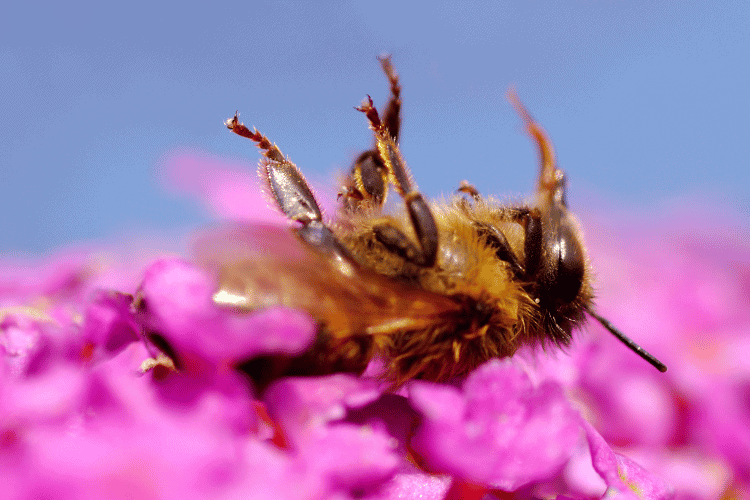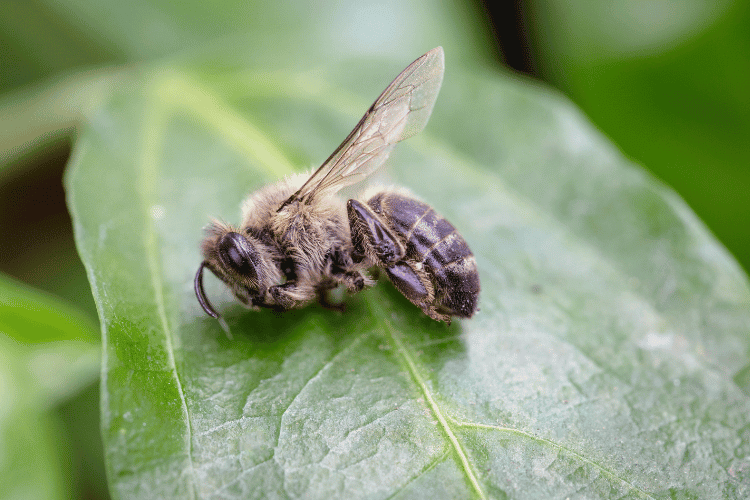Spectracide is a commonly used pesticide product found in many home gardens and lawns. The brand offers a range of weed and insect killers, including popular options like Spectracide Weed Stop and Spectracide Bug Stop.
Unfortunately, some of the active ingredients in Spectracide’s products have the potential to be harmful to bees if used improperly.
For beekeepers and anyone concerned about protecting pollinators, it’s important to understand how these chemicals can impact bees and what precautions should be taken when using them.
TL;DR
Spectracide weed and insect killers contain active ingredients like pyrethrins and glyphosate that can harm bees through direct contact or residue contamination of pollen and nectar sources.
Proper precautions allow safer use around pollinators. Always read and follow label directions, spray only blooming plants when bees are inactive, and consider alternative pest control methods when possible.
The Active Ingredients in Spectracide

Spectracide products utilize various active ingredients to control weeds, insects, and other outdoor pests. Two of the most common active ingredients are glyphosate and pyrethrins.
Glyphosate, found in Spectracide Weed Stop formulas, is a broad-spectrum systemic herbicide. It works by blocking protein synthesis in plants, eventually killing them.
Pyrethrins are potent insecticides that are derived from chrysanthemum flowers. They attack the nervous systems of insects, paralyzing and eventually killing them.
While glyphosate mainly impacts plant life, pyrethrins can be more problematic for bees. Even though pyrethrins are based on natural compounds, they can be toxic to bees through ingestion or contact exposure.
Bees exploring a yard or garden may inadvertently come into direct contact with surfaces treated with a Spectracide product containing pyrethrins.
How Spectracide Can Impact Bees
Bees rely heavily on pollen and nectar as food sources. If these get contaminated with pesticides, they can poison bees or build up to toxic levels within the hive over time.
Adult bee mortalities may occur, or larval development can be hindered impacting the overall health of the colony.
Pyrethrins specifically attack the nervous system of insects. So direct contact exposure to Spectracide products containing pyrethrins could be immediately fatal if enough bees are affected.
The pesticide residues can also get transported back to the hive by foraging worker bees. This spreads the contamination and puts more of the colony at risk.
Even glyphosate may negatively impact bees through indirect effects. Though not directly toxic to bees, glyphosate weakens plants. This can reduce the availability of pollen and nectar from treated areas.
Applications of Spectracide Weed Stop to clovers or wildflowers, for example, could limit bee foraging habitat and food sources.
Care should especially be taken not to spray Spectracide directly on blooming plants where bees are active. Bees may be immediately present on flowers when the application is made.
The pesticide residues can then get picked up by bees visiting shortly after treatment. Spectracide use is best limited to only non-blooming plants when possible.
Reading and adhering to all label precautions and directions can further help minimize risks to bees.

Tips for Using Spectracide Safely Around Bees
When it comes to Spectracide use around bees, caution is warranted. But there are ways to protect bees while still using Spectracide products when needed:
- Carefully read all label instructions and be sure to follow them exactly. Never use more than directed amounts.
- Opt to spray early in the morning or at night when bees are least active and away from hives. Avoid making applications midday when foraging is at its peak.
- Do not spray or allow drift to occur onto blooming plants, especially if bees are spotted actively visiting the flowers.
- Focus treatments only on targeted weeds, pests, or affected areas. Avoid wide broadcast applications.
- Consider alternative pest control methods like mulching, hand weeding, traps, barriers, organic sprays, etc. to reduce reliance on harsh chemicals.
- Post signs or temporarily cover bee hives during spraying and a few hours after application to prevent direct contact exposure.
Taking some simple precautions, beekeepers and homeowners can safely use Spectracide products when essential while still protecting bees and other pollinators.
The Importance of Protecting Bees
Honey bees play a vital role by pollinating flowering trees, plants, and crops. It’s estimated that around one-third of the food we eat relies on bee pollination.
Beyond honey production, honeybees contribute an estimated $15 billion dollars yearly to U.S. crop production through this essential ecosystem service.
Unfortunately, bees face many threats today, including pesticide exposure, parasites like mites, habitat loss, climate change effects, and colony collapse disorder (CCD).
Pesticide toxicity is a known contributor to the stresses bees face. Even sub-lethal doses that don’t directly kill bees may impact development, navigation, feeding behavior, and immunity to disease.

The widespread use of harsh chemicals like pyrethrins can expose substantial numbers of bees and hives to concerning levels of pesticides.
While an individual homeowner may think their small garden or lawn poses little risk, collectively suburban neighborhoods represent vast areas of potential pesticide exposure.
It’s estimated that homeowners use up to 10 times more chemical pesticides per acre than farmers. So actions taken at an individual level do matter, and homeowners should understand their product choices impact local bees.
Wrapping Up
Spectracide and comparable pesticide products require responsible use to avoid long-term harm, especially to essential pollinators like bees. This applies to all species, including honeybees, carpenter bees, and others.
The contact and residual toxicity of certain active ingredients means the products can pose risks to bees through direct exposure or from lingering traces in nectar and pollen.
However, with thoughtful practices like reading labels thoroughly, only spraying early/late when bees are inactive, and avoiding flowers, bees and Spectracide can co-exist safely.
Keep the bigger picture of supporting a vibrant local ecosystem in mind, and always opt for the least toxic solutions possible. Protecting our pollinators protects the health and biodiversity of the wider environment we all share.
- Does Bleach Kill Bees? - April 23, 2024
- How Do I Get Rid of Ants Without Harming Bees? - April 16, 2024
- Do Bug Zappers Kill Bees? Completely Explained - April 9, 2024
